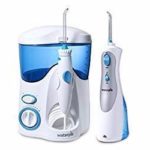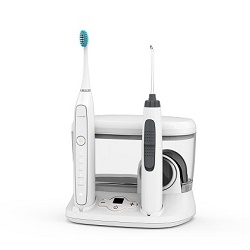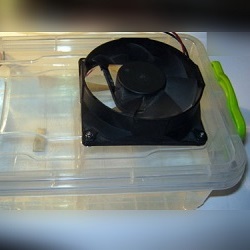How to use the irrigator at home
Dentists confirm that the toothbrush is not able to cope fully with the cleansing of interdental surfaces, braces and periodontal pockets. Flossing (floss) is almost impossible to treat the region of distant teeth, among other things, it can injure the gum. Therefore, the appearance of clever teeth care devices is justified. One of these devices that can take care of the oral cavity is the irrigator. Many have seen something similar in the dentist’s office, but not everyone represents and understands how to use the irrigator at home.
Content
What it is, the benefits of using
Today, there are two types of devices on the Russian market: stationary and portable.
First type the irrigator works from a network, therefore, before purchase it is worth making sure that in a bathroom there is a socket, suitable for it. The volume of the tank, depending on the model can be from 0.5 to 2 liters. In addition to the autonomous, where the water must be poured, stationary irrigators can be flowing type, working from the water supply, but they did not earn much popularity in our country because of poor water quality.
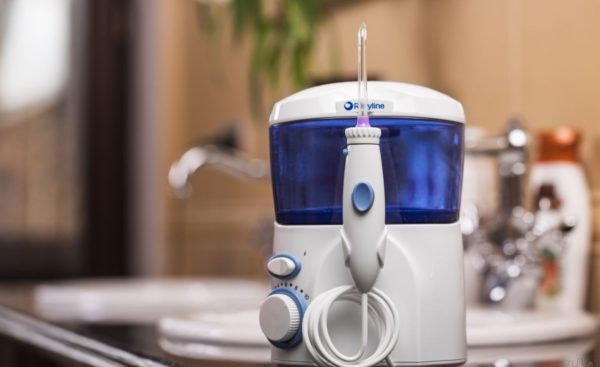
Portable type has one indisputable advantage - it is its mobility, consisting in the small size of the device. The volume of the tank does not exceed 1 liter, there is the ability to work from batteries, which allows you to charge oral irrigator in any accessible place. A big minus of almost all road types is in their low power.
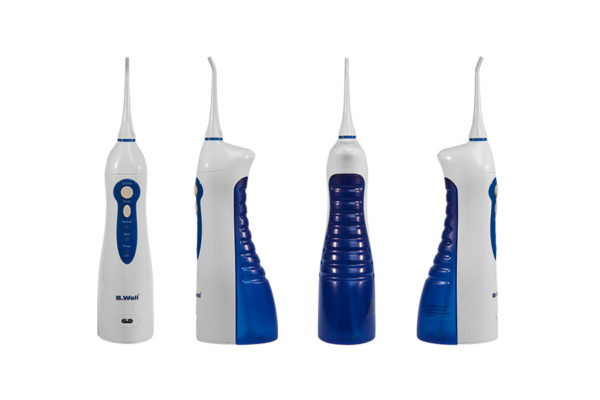
The irrigator is an excellent addition to the toothbrush and toothpaste during oral care.
It should be noted that this device is in no way able to replace the standard mechanism for cleaning teeth. Therefore, acquiring irrigatordo not rush to put your toothbrush on the far shelf. Definitely, the device is capable of cleaning hard-to-reach areas in the mouth, braces, crowns and implants. In part, the device will be able to replace the dentist’s office, and the irrigator will wash the periodontal pockets as well as the dentist’s. With it, it is possible to remove the stone from the gap spaces.
It serves as an indispensable tool for the prevention of gingivitis, periodontitis, stomatitis in children and bleeding gums. But despite all the positive qualities, it is impossible to refuse the services of a specialist, since only a dentist can determine the diagnosis and correctly prescribe treatment.

Instructions for using the device
Having decided on the choice and having bought the device, many only at home are wondering, how the irrigator works and how to use it correctly, so as not to harm either gums or teeth. The device is really an innovation, so before you start using it, it will not be superfluous to look into the instructions for use or watch the video tutorial on the Internet.
What should be the liquid poured into the tank
Quite often, many wonder what liquid can be poured into the reservoir of the device.Definitely, the water should be boiled and filteredOtherwise, there is a risk of infection or damage of the unit. At home, you can make decoctions of herbs, but it should be borne in mind that not everyone and not always allowed to use decoctions, it is better to consult on this issue with your doctor. This is not the only reason that can impede the use of herbs, the fact is that the particles of plants, poorly filtered, can get into the technological holes of the apparatus, disrupting its operation.
Make sure that the liquid is not too hot or cold, it should be comfortable for the mouth.
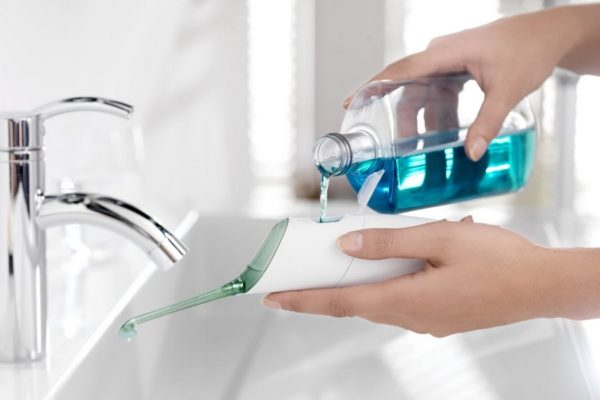
If the instruction does not speak about using only pure water, then a couple of drops can be added to the tank. mouth rinsethat will have a beneficial effect on the teeth and gums when using the irrigator. But note that it will be necessary to thoroughly flush the device after such a mixture.
How to treat the oral cavity
Before starting the procedure, you should use a toothbrush, remove with it large pieces of food, and only then apply an irrigator. The device is not able to replace the mechanical treatment of the oral cavity, its purpose - to produce hygiene at the maximum level. The cleaning process itself should be about 15 minutesThis time is quite enough to complete the task of cleaning the mouth of bacteria, plaque and food debris.
At the time of operation of the device, it must be held at a right angle to the area being treated, directed from top to bottom, not forgetting that the gum fits the tooth.
Before using the irrigator for the first time, you can familiarize yourself with the video instructions for the device, thus it will be possible to avoid errors in operation and prevent possible damage to the gums.

Starting to clean the mouth is necessary with the lowest pressure, gradually increasing it, thus the gums and teeth are given the opportunity to adapt.
Cleansing the oral cavity should begin with the front teeth of the lower and upper jaws, gradually moving to the back, giving them a little more time, because a regular brush does not always cope with its function in this area, and there is going to most food debris and harmful microbes.
Before using the irrigator for the oral cavity it is impossible to clean the interdental crevices with the help of a dental floss - it can damage the gums, and the device will only aggravate the situation.
How many times a week can you use the device
Depending on the goals pursued by the owner of the irrigator, the use of the device as a preventive measure for diseases, such as stomatitis, periodontal disease, oral hygiene or the treatment of a particular disease, determines the frequency of its use.
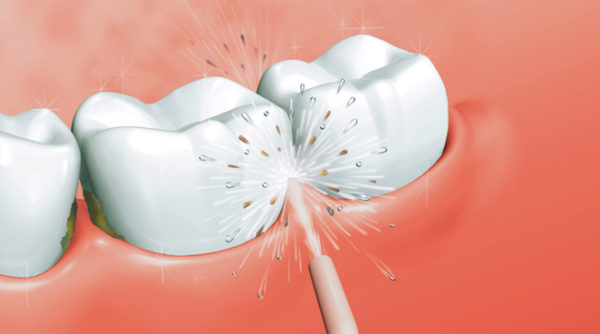
For therapeutic purposes, the frequency of use of the device is determined by an expert individually. In cases where there is a desire to increase the level of cleanliness of the teeth and gums, it is enough to use the device up to 4 times a week.
Conclusion
The irrigator, invented in 1962, is considered to be unique deviceable to remove up to 99% of plaque biofilm plaque, contributing to the formation of caries, periodontal disease and gingivitis. With proper use of the device can improve blood circulation in the gums, remove the unpleasant smell, remove plaque from the teeth from coffee and tea. If you have doubts about your operation of the unit, you can watch a video in which manufacturers tell and showhow to properly clean the device, not only the teeth, but the entire oral cavity.

/rating_on.png)
/rating_half.png)






